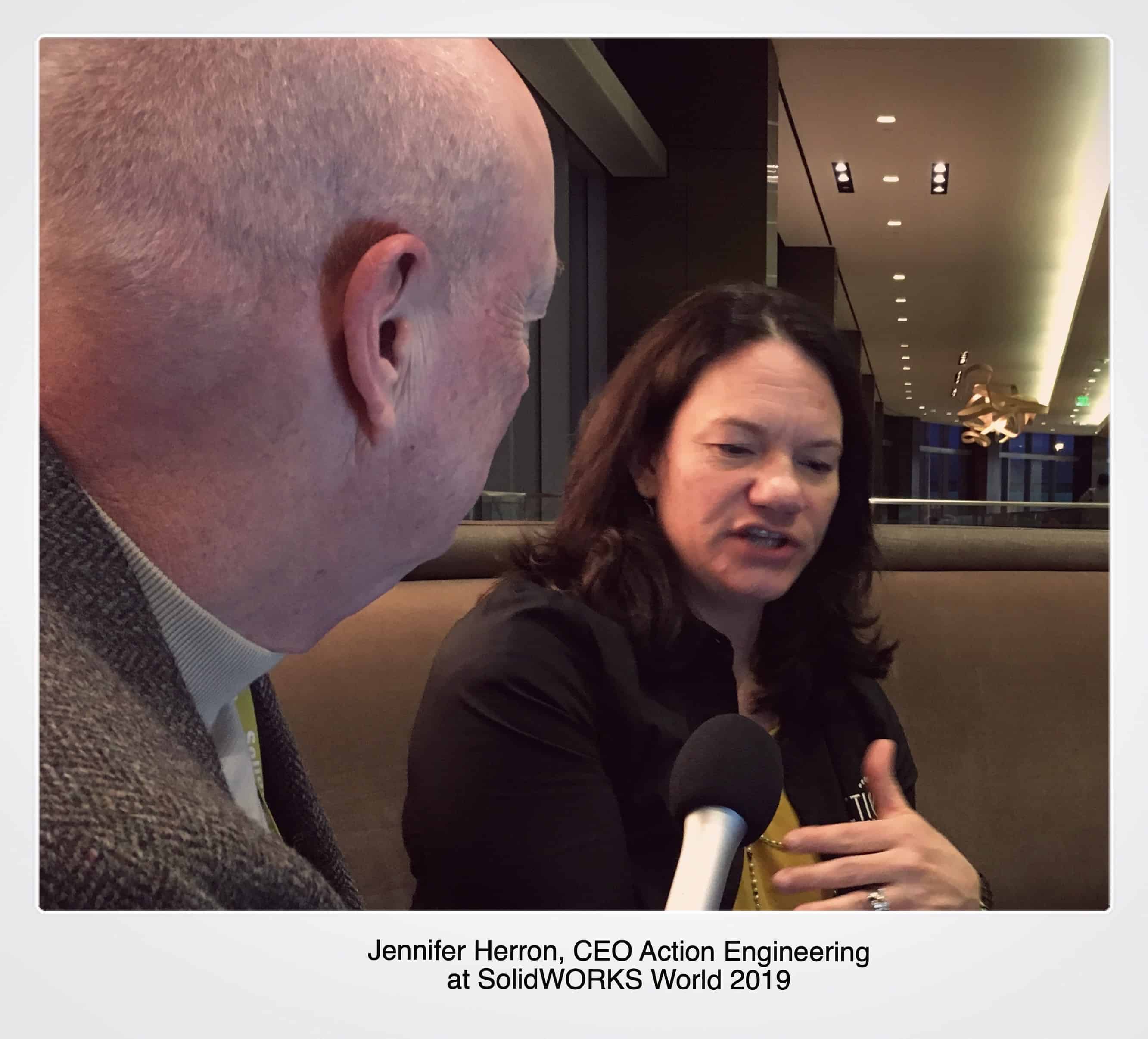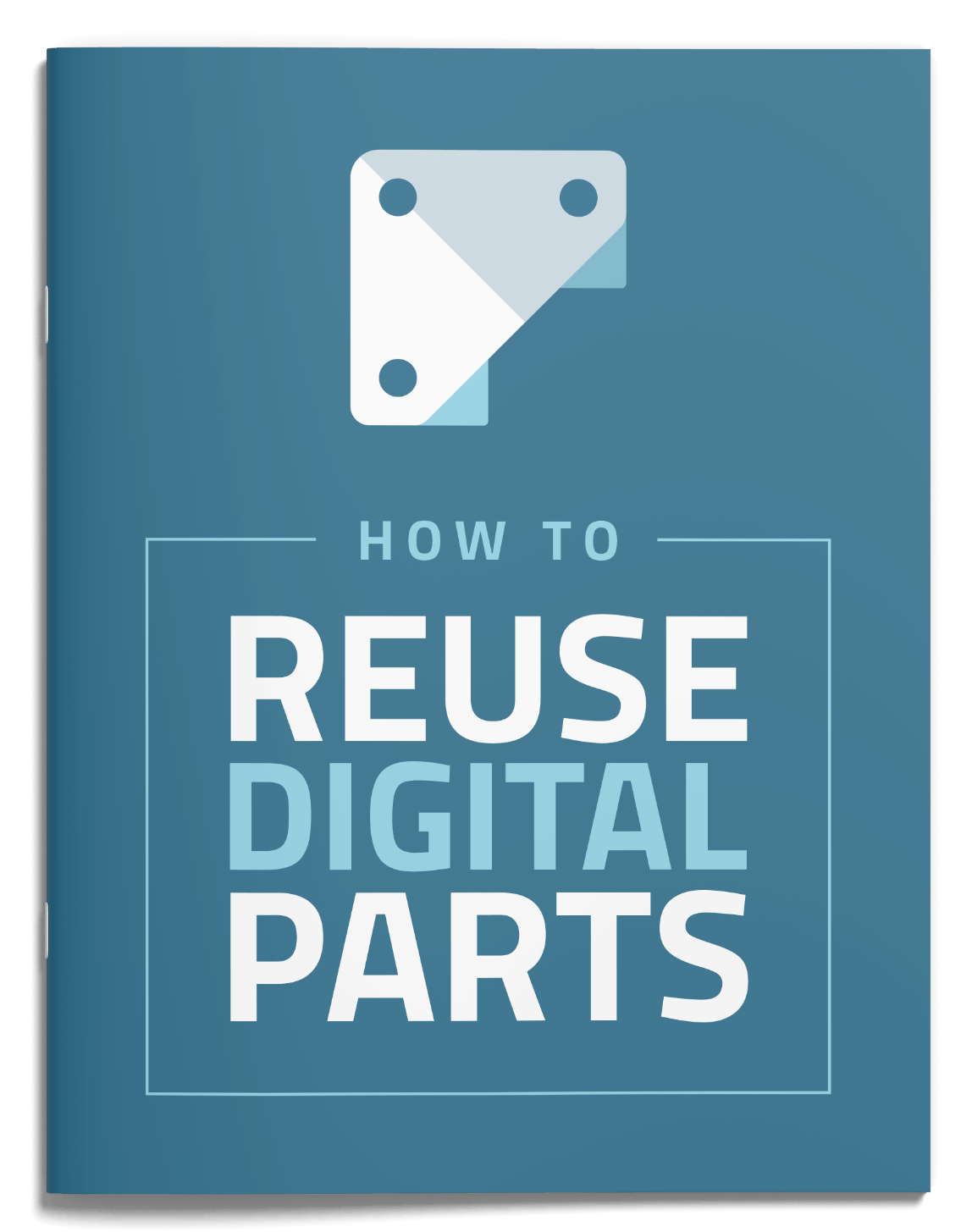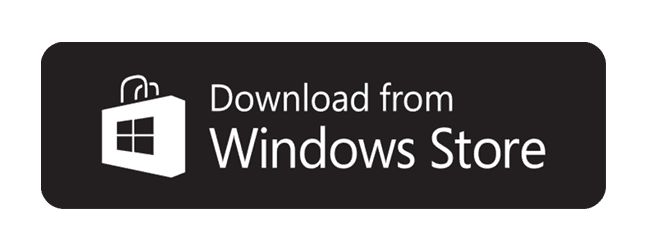A Big Year for MBD: Key Takeaways from SOLIDWORKS World 2019

I recently returned from my last SOLIDWORKS World in Dallas, Texas. I say last because starting next year, what has been known as SOLIDWORKS World will be known as 3DEXPERIENCE World, a renaming prompted by parent company, Dassault Systemes.
This year’s event was interesting, not just because of the rebranding, but for the attention paid to Model-Based Definition (MBD) and the Model-Based Enterprise (MBE). Both initiatives have been championed by Action Engineering for several years as major evolving trends for contemporary and future product design and manufacturing.
As an industry observer and participant, I think that SOLIDWORKS is following the path of PTC with their MBD rollout, but they’re not evolving their MBD solution as rapidly as I and many SOLIDWORKS customers would like. I see them backing away from it to see how it goes at this initial adoption phase for SOLIDWORKS, and then pushing it to the next level.
Although SOLIDWORKS is a bit behind PTC’s Creo regarding MBD, I think they’re going to pick up the pace. I think this is just an evolution, a journey that not only will the customers be on, but the CAD companies, as well.
SOLIDWORKS World 2019 offered a lot of presentations and classes surrounding MBD, ranging from very basic to advanced, which is a good sign. It’s especially interesting because we’re definitely moving from early adoption phase into a surge of adoption occurring across the board, including a lot of SOLIDWORKS customers. I think it is good news and a sign people are buying into model-based definition, and the fact that they know that the 3D information can be used in machine readable ways. I am seeing a balance of machine-readable data versus presentation for human consumption information and how that is balanced as we proceed down the path to the model-based enterprise.
So far I’ve discussed what’s out right now in SOLIDWORKS 2019. Looking ahead to the fall when SOLIDWORKS 2020 comes out, I’ll address some new features and capabilities that I’m hoping we might see.
Specifically, from the model-based definition side, we might see enhanced usability for applying PMI, or applying annotations. That’s a big deal because of what we’ve experienced when we train users is the fact that they can’t yet show and hide an individual annotation on an individual 3D View. That would really be a great enhancement. I’d also like to see this available on any 3D View you choose.
Ideally, you want to be able to pick and choose any annotation and show/hide it in any 3D View. We’ve worked with this capability in Creo, NX, and Inventor where you can pick and choose the annotation onto any view rather than collect them only on an annotation view. That would be a big usability game changer for SOLIDWORKS.

In the next release of SOLIDWORKS it would be helpful to see tolerances that could be both machine readable as well as human readable. There are still a few SOLIDWORKS DimXpert annotations that lack both.
This possibility can be addressed from the SOLIDWORKS DimXpert side and the user side – the authoring side and the consuming side. DimXpert has a really great machine-readable capacity and has a pretty decent human readable capacity with the exception of the 3D View show/hide authoring issue. There are also a handful of usability issues I think that could be addressed in SOLIDWORKS from the human readable perspective that would enhance things, such as:
- Evolving mapping of metadata during 3D PDF publishing to be repeatable. I discovered a few quirks. Not show-stoppers, but annoyances.
- Machine readable datum targets. These are super critical for those who manufacture parts that are casted, forged, 3D printed, or have wonky geometry.
- Did I mention hiding / showing individual annotations in any 3D Views as an ad-hoc capability, rather than grouped by annotation plane?
Additional machine readability can be leveraged through QIF, and if I pull in Origin International, they actually have a SOLIDWORKS implementation that performs automated CMM programming.
I think there is a huge use case, especially from NX to SOLIDWORKS for OEM to supply chain usability that is really important. From a machine-readable perspective, it’s there. Third-party vendor interoperability requirements are needed. It would be great if all standard parts had the unique machine-readable information and tolerances that could aid tolerance stack-up analysis. This is where we’re really starting to get to the holy grail of model-based definition, where ROI will be revealed.
This machine/human readability issue affects us and our customers, because it supports Action Engineering’s “reuse your CAD” philosophy, which is the delivery of a low- and a high-fidelity model at the part detail level.
High-fidelity models take up a lot of file space, so I appreciate that vendors, such as CADENAS PARTsolutions, have part model libraries with low, medium, and high levels of detail. There’s a lot of thought that’s gone into those levels of detail so that you can maximize the performance of your assembly as you tree it up into the part, but still maintain that visual component of presentation or human readability.
Low fidelity models, also known as lightweight can be displayed faster with higher performance levels, while protecting IP.
eDrawings has been one of the more popular aspects of SOLIDWORKS for years, and I think for the 2020 release of SOLIDWORKS, DS will enhance it for greater MBD usability.
I especially like eDrawings for in-house manufacturing. There’s a lot of capability and functionality that can be maintained from the native SOLIDWORKS model onto the shop floor. We recently worked with a company that does weldments. Weld beads in SOLIDWORKS assemblies do not translate out into a 3D PDF, but they do translate out into an eDrawing. If you’re designing and manufacturing in house, just keep it all in that one tool suite. I think that’s a great functionality for 3D work instructions, especially welding if SOLIDWORKS is your tool.

So, how could the direction of MBD with SOLIDWORKS affect our business and customers?
The adoption of MBD within SOLIDWORKS is growing but is in for a bit of a rough road with the MBD product managers at SOLIDWORKS, at least for a while. On the other hand, MBD is a natural evolution of things that really resonates with Action Engineering since we’re in the business of awareness, training, and support for bringing people up to speed on the details and implementation of MBD.
All MBD tools are ground-breaking and game changers for companies who figure out how to use them effectively. My best wishes to the SOLIDWORKS MBD team in the upcoming evolutionary journey they are embarking on.
Learn More: Get These Free eBooks
The Basics of SPM
SPM vs. Classification
MBE / MBD for Mfgs
Latest posts by Jennifer Herron (see all)
- Democratizing MBE: Key Takeaways from the MBE Summit 2019 - May 13, 2019
- A Big Year for MBD: Key Takeaways from SOLIDWORKS World 2019 - March 20, 2019



